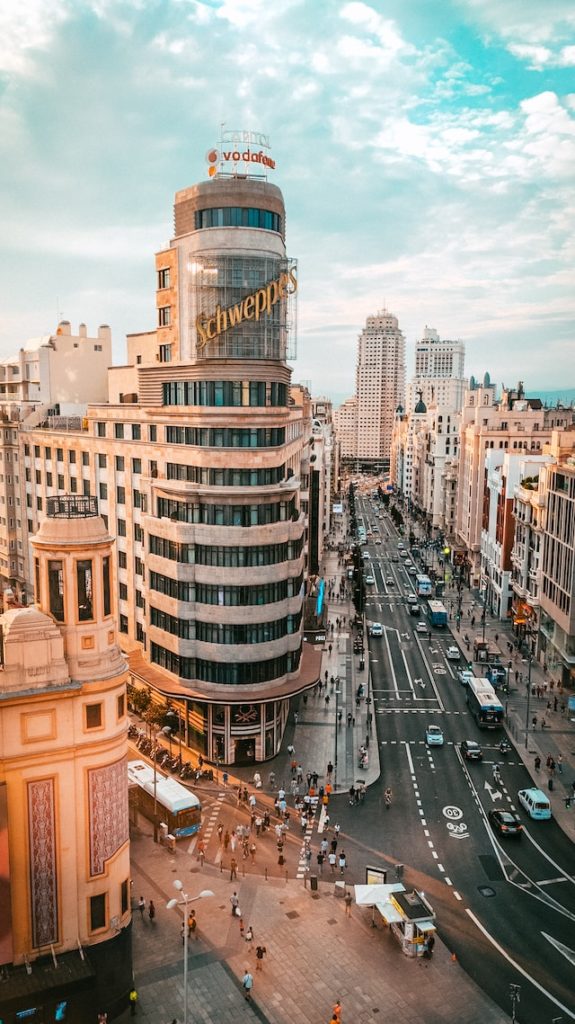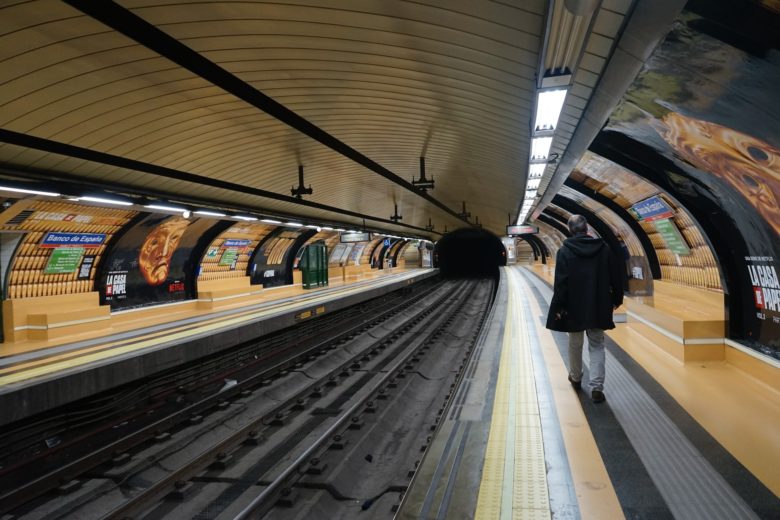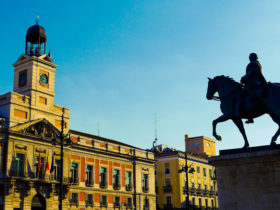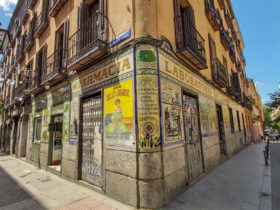Transportation in Madrid is essential for visitors to consider while planning their trip. This article aims to provide detailed information on the various methods of reaching Madrid and traveling within the city. Madrid is Spain’s capital, known for its rich history, vibrant culture, and excellent public transport system.
Keep Reading About Madrid…

Table of Contents
Getting to Madrid
By Plane
The primary airport serving Madrid is Adolfo Suárez Madrid-Barajas Airport (MAD). It is located 12 kilometers (7.5 miles) northeast of the city center. This airport offers flights to and from many cities worldwide, making it one of Europe’s most important international travel hubs. Find cheap flights to Madrid.
By Train
The main train stations in Madrid are Atocha and Chamartín, both served by Spain’s national railway company Renfe. These stations connect Madrid with other major cities in Spain through high-speed trains (AVE), regional trains (Cercanías), and long-distance trains (Larga Distancia). For international connections, Madrid stops are offered on several overnight train routes to cities like Paris, Lisbon, and Marseille. Find cheap trains to Madrid.
By Car
If you travel by car, Madrid has an extensive network of highways and roads connecting it with other cities in Spain and neighboring countries. Some important highways include A-1 (Madrid-Burgos), A-2 (Madrid-Zaragoza-Barcelona), A-3 (Madrid-Valencia), A-4 (Madrid-Cordoba-Sevilla), A-5 (Madrid-Mérida-Lisboa), and A-6 (Madrid-Galicia). However, remember that driving within the city might be difficult due to congested traffic. You can rent a cheap car here.
By Bus
Several bus companies offer intercity connections from destinations across Spain and other European countries. The central bus station is Estación Sur, which is located near Méndez Álvaro train station and provides services to cities such as Barcelona, Valencia, Seville, and Lisbon. The central stations are Estación de Avenida de América and Moncloa for regional bus connections within the Community of Madrid. Find cheap buses to Madrid.
Madrid Transportation: How to Get from the Airport to the City Center
Getting from the Airport to Madrid’s City Center is simple due to the efficient transportation options available. Madrid’s main airport, Adolfo Suárez Madrid-Barajas Airport (IATA: MAD), is an international airport located 12 kilometers (8 miles) northeast of the city center. This airport has four passenger terminals and serves as the largest aviation hub in Spain. The following are the primary transportation methods from the airport to Madrid’s city center.
- Metro: The Madrid Metro system connects the airport to the city center quickly and cost-effectively. Line 8 operates from Nuevos Ministerios station and directly links the airport via the Aeropuerto T1, T2, T3, and Aeropuerto T4 stations. The average travel time is around 15-20 minutes, and tickets can be purchased from metro ticket machines or online.
- Train: The Cercanías local train connects the airport to several destinations within Madrid, including Atocha and Chamartín train stations. Passengers can access the train service from Terminal 4. Train tickets can be purchased at machines or ticket counters with an average journey time of approximately 25 minutes.
- Bus: An express bus service (route 203) operates between the airport’s terminals and central Madrid locations, including O’Donnell, Cibeles, and Atocha. The express bus runs every 15-20 minutes during daytime hours and every 35 minutes during nighttime hours. Tickets can be acquired on board with cash.
- Taxi: Taxis are readily available outside all airport terminals for passenger convenience. The journey to the city center takes approximately 20-30 minutes, depending on traffic conditions. Taxi fares have a fixed rate depending on the zone and do not include any additional surcharges.
- Private Transfer: Another option travelers can choose is booking a personal car service ahead of time. Various companies offer pre-arranged pickup services from the airport, providing personalized and comfortable transportation to Madrid’s city center or other desired destinations. You can book your transfer here.
Public Transportation in Madrid
- Metro: The Madrid Metro is a fast and efficient way to travel within the city. It has 13 lines and over 300 stations. Line 1 is the oldest, while line 12 is known as Metrosur. Some of the major Metro stations in Madrid include Sol, Nuevos Ministerios, and Atocha-Renfe. Tickets can be purchased at vending machines or ticket counters.
- Cercanías: Cercanías Madrid is a network of suburban trains that connect the city center with nearby towns and cities. Operated by Renfe, Spain’s national rail company, it consists of nine lines (C-1 to C-10). One of the most important stations on this network is Puerta de Atocha, which provides transfers to other regional trains and high-speed AVE trains.
- Buses: With more than 200 routes, Madrid’s bus system covers almost every part of the city. These red buses are managed by Empresa Municipal de Transportes (EMT). There are daytime buses (usually from 6 a.m. to 11 p.m.) and night buses called “buhos.” Bus stops display information about routes and schedules.
- Trams: Known as “Metro Ligero,” these modern trams cover three lines (ML1, ML2, and ML3). They operate mainly in suburban areas like Boadilla del Monte or Pozuelo de Alarcón.
For more information about public transportation in Madrid, be sure to check the official CRTM website.
Taxis
Madrid has a large fleet of white taxis with a red stripe on their sides. They can be easily hailed from the streets or booked through phone apps. Taxis are metered, and prices vary depending on the time of day and any additional charges.
Car Rentals
Visitors can rent cars from various companies such as Avis, Europcar, and Hertz. It is recommended to book in advance to ensure availability. Remember that in Spain, driving is on the right side, and the standard transmission for rental cars is manual.
Bikes and Scooters
Madrid has a public bike-sharing system called “BiciMAD,” which consists of electric bicycles. Users need to sign up for a temporary subscription online or at one of the many BiciMAD stations. Additionally, there are several private companies that rent traditional bicycles and electric scooters. These can be found throughout the city and can be accessed via mobile apps.









